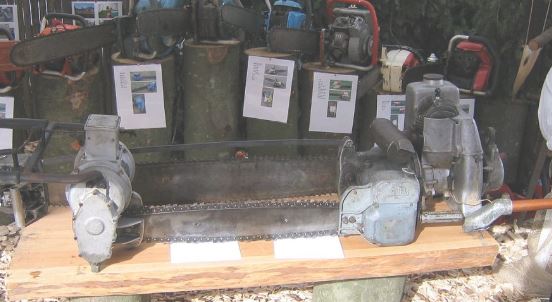The handheld machine we know is big and dangerous. It’s the lumberjack’s tool to cut down trees and it’s a woodworking essential. But other than that, the chainsaw is probably one of the most versatile machines ever invented. It can be used for wood, bricks, concrete, and most surprisingly, as a surgical tool! The chainsaw has evolved ever since with several different types out on the market. Why were chainsaws invented? Who uses it? Is it more than an icon of the horror genre? Continue reading to find out more!
The Chainsaw’s Medical Origins
This probably answers the question, “why were chainsaws invented?” Surprisingly, the machine began in the surgical field. The first chainsaw was actually used for childbirth.
Before a safe cesarean procedure became common, there was symphysiotomy. The Guardian described the medical procedure as “a dangerous alternative” to remove the child from the womb. This type of operation has been around since 1597, but it wasn’t until the 18th century when two Scottish doctors John Aitken and James Jeffray created a small “flexible saw” that consisted of a “fine serrated link chain held between two wooden handles.”
A similar instrument was made in 1830 developed by the German orthopaedist Bernhard Heine called osteotome. It “had links of a chain carrying small cutting teeth” used to cut the bone.
The Timeline of How it Became the Lumberjack’s Best Friend
It’s a little hard to believe that Bernhard Heine’s osteotome was the precursor for the modern chainsaw and it took inventors five decades to create the ideal one for wood-chucking.
On January 17, 1905, the patent for an “endless chainsaw” was granted to Samuel J. Bens. After more than a decade, Canadian millwright James Shand improved the design by making it portable. In 1933, the German company Festo further developed the power tool.
Parts of a Chainsaw
“The whole is a sum of its parts,” goes well with chainsaws. Sure, one looks like a two-part machine, but six parts with almost 20 sub-parts actually make it up. Each one is just as important as the other. Instead of answering “why were chainsaws invented?”, let’s ask “what makes a chainsaw work?”
Engine
This is the most essential part of a chainsaw. There are two types of chainsaw engines: the traditional gasoline internal combustion engine that runs on petrol and the electric motor that runs on batteries. Either works well for wood-cutting.
Drive Mechanism
Of course, the engine cannot run without a drive mechanism. The centrifugal clutch (which expands with increasing speed) and the sprocket (which is changeable, depending on what’s needed) are the two most important parts.
Guide Bar
The guide bar is “an elongated bar with a round end of wear-resistant alloy steel typically 40 to 90 cm (16 to 36 in) in length.” There are three different types, namely the laminated bar, the solid bar, and the safety bar. Four smaller parts make it up: the gauge, the oil holes, grease holes at the bar nose, and the guide slot.
Cutting Chain
It’s obviously not a chainsaw without, well, a chain. It’s like a bicycle chain with additional small, sharp cutting teeth. There are two types of chains: full complement (one tooth for every two links) and full skip (one tooth for every three links).
Tensioning Mechanism
The tensioner acts like a glue that “binds” the guider bar and the cutting chain together. According to TimberGadgets.com, the tensioner is “typically located on the opposite side of the chainsaw” and it “controls the amount of tension or slack in the chain.”
Safety Features
Such dangerous machinery needs to be safe for use, of course. Some of the features added are guard links, a chain brake, a safety throttle, an anti-vibration system, and of course, the on/off switch.
Types of Chainsaw
There are five different types of chainsaw, six when including the surgical saw. Even then, it proves that the machine is versatile. The chainsaw has a variety of uses but it is widely and mainly used for wood-cutting.
Gas-powered
Known for being powerful and portable, people who value speed and efficiency usually choose the gas-powered chainsaw. It can survive for decades if maintained well and it only needs simple repairs. The downsides are it’s extremely heavy, produces fuel emissions, and requires the most maintenance care.
Electric or Corded
These are chainsaws that need to be plugged in before use. It’s light and with longer bar lengths. The electric chainsaw is also cheap, quiet, and easy to operate. Its strength is also its weakness since it can’t be used when there’s a power outage and it can only be repaired by a professional.


